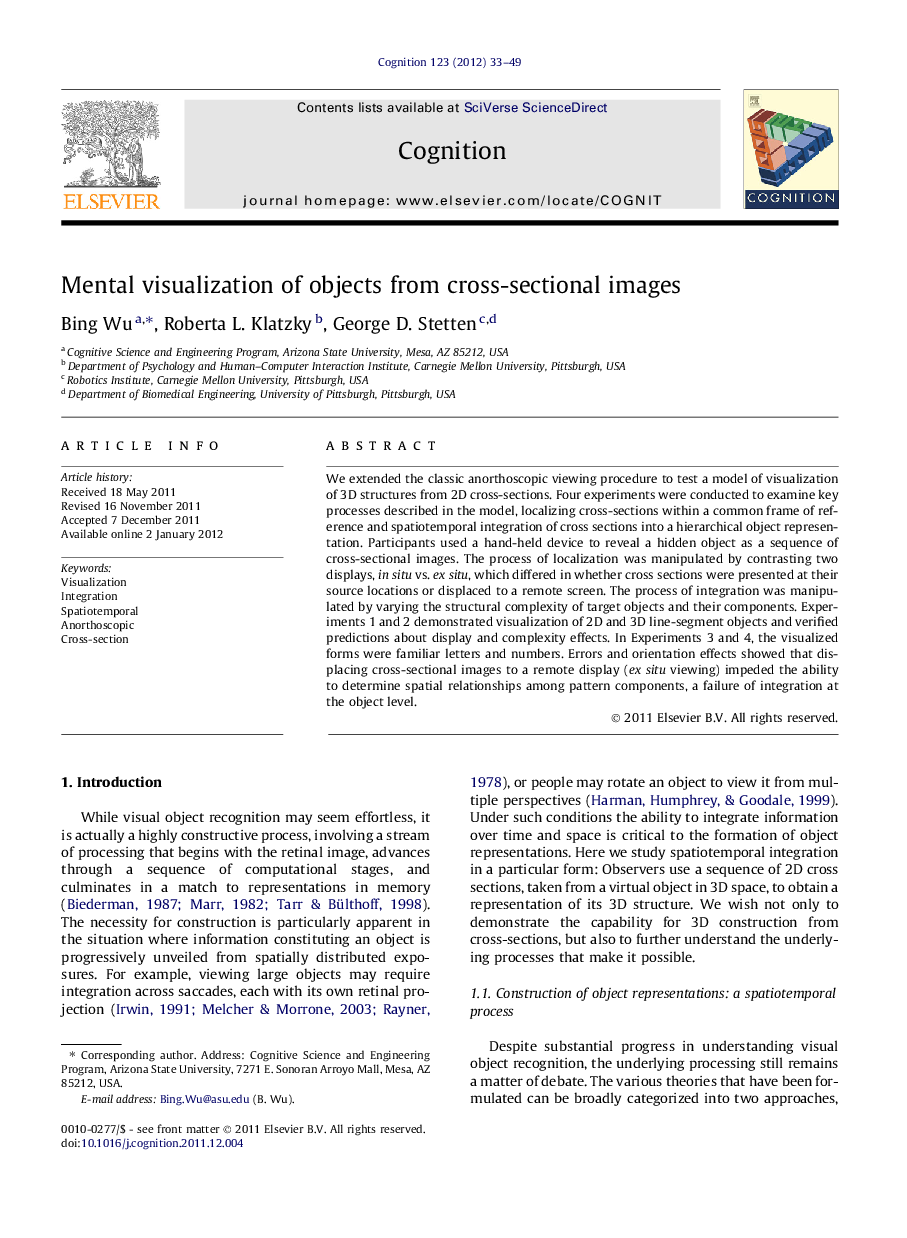| Article ID | Journal | Published Year | Pages | File Type |
|---|---|---|---|---|
| 926514 | Cognition | 2012 | 17 Pages |
We extended the classic anorthoscopic viewing procedure to test a model of visualization of 3D structures from 2D cross-sections. Four experiments were conducted to examine key processes described in the model, localizing cross-sections within a common frame of reference and spatiotemporal integration of cross sections into a hierarchical object representation. Participants used a hand-held device to reveal a hidden object as a sequence of cross-sectional images. The process of localization was manipulated by contrasting two displays, in situ vs. ex situ, which differed in whether cross sections were presented at their source locations or displaced to a remote screen. The process of integration was manipulated by varying the structural complexity of target objects and their components. Experiments 1 and 2 demonstrated visualization of 2D and 3D line-segment objects and verified predictions about display and complexity effects. In Experiments 3 and 4, the visualized forms were familiar letters and numbers. Errors and orientation effects showed that displacing cross-sectional images to a remote display (ex situ viewing) impeded the ability to determine spatial relationships among pattern components, a failure of integration at the object level.
► 3D aperture-viewing paradigm to study the visualizing of object from cross-sections. ► Two key processes identified: localization and integration of cross-sections. ► Ex situ (cf. in situ) viewing impedes the localization of cross-sectional images. ► The process of integration influenced by display mode and target complexity. ► Findings have practical implications particularly in medicine.
